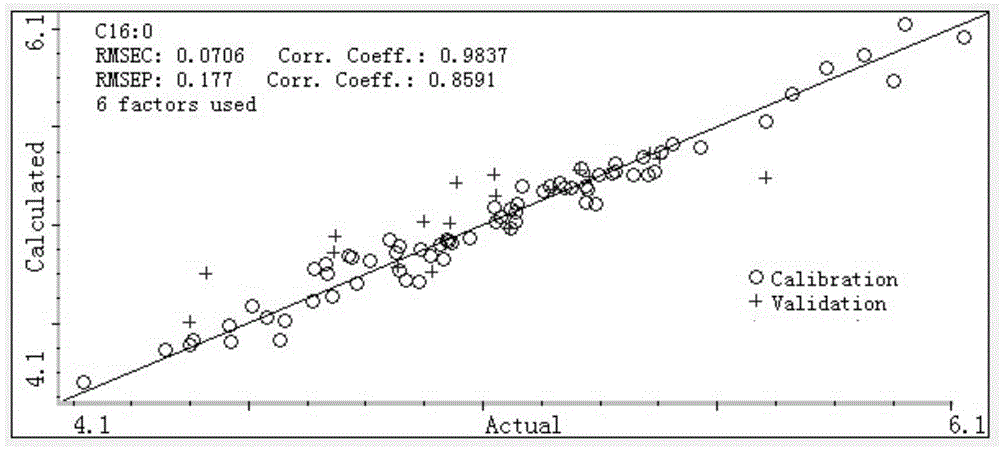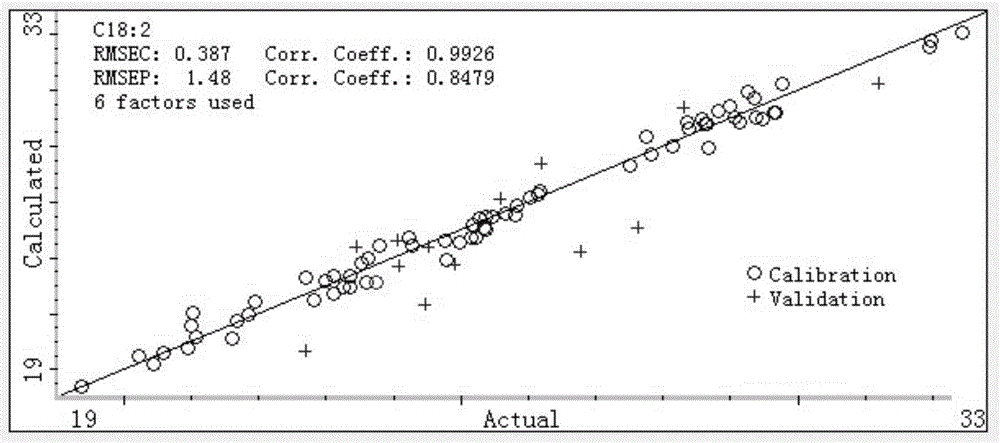Nondestructive testing method of content of fatty acid in peony seeds
A technology for non-destructive testing and peony seeds, applied in the field of testing, can solve problems such as inability to achieve non-destructive testing of seeds, and achieve the effects of rapid non-destructive testing, close prediction accuracy, and easy operation
- Summary
- Abstract
- Description
- Claims
- Application Information
AI Technical Summary
Problems solved by technology
Method used
Image
Examples
Embodiment 1
[0037] Step 1: Harvest mature peony seeds and dry them at 60°C for 8 hours for later use. Among them, there are 97 mature seeds of peony, including 26 cultivated peony (P.suffruticosa), 19 Fengdan peony (P.ostii), 46 purple spot peony (P.rockii), and ovale peony (P.qiui) 3 , and 3 parts of peony (P.lactiflora). The selected materials cover the main germplasm types of peony cultivated in my country.
[0038] Step 2, weigh 20g of each sample and put it into the automatic rotating cup of ANTARIS Fourier transform near-infrared scanner (Thermo Nicolet Co., USA). -1 Range scans 64 times. Each sample was filled three times, and the average spectral value was taken.
[0039] The third step is to measure the fatty acid content of each sample by gas chromatography, that is, the chemical value, and finally use TQ Analyst V7.2 software to establish a mathematical model between the spectral value and the chemical value.
[0040] Wherein the step of gas chromatography comprises:
[00...
PUM
 Login to View More
Login to View More Abstract
Description
Claims
Application Information
 Login to View More
Login to View More - R&D
- Intellectual Property
- Life Sciences
- Materials
- Tech Scout
- Unparalleled Data Quality
- Higher Quality Content
- 60% Fewer Hallucinations
Browse by: Latest US Patents, China's latest patents, Technical Efficacy Thesaurus, Application Domain, Technology Topic, Popular Technical Reports.
© 2025 PatSnap. All rights reserved.Legal|Privacy policy|Modern Slavery Act Transparency Statement|Sitemap|About US| Contact US: help@patsnap.com



